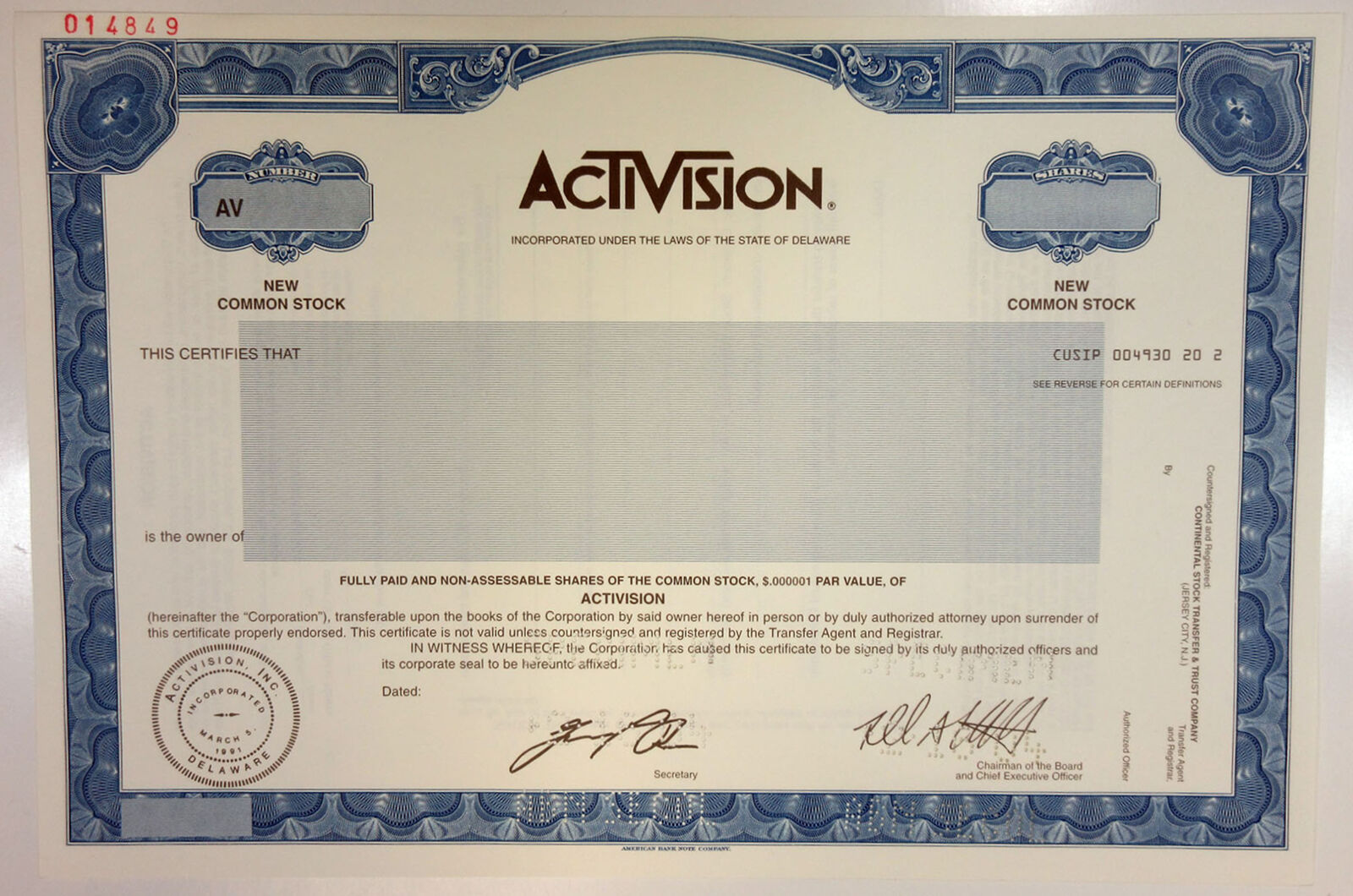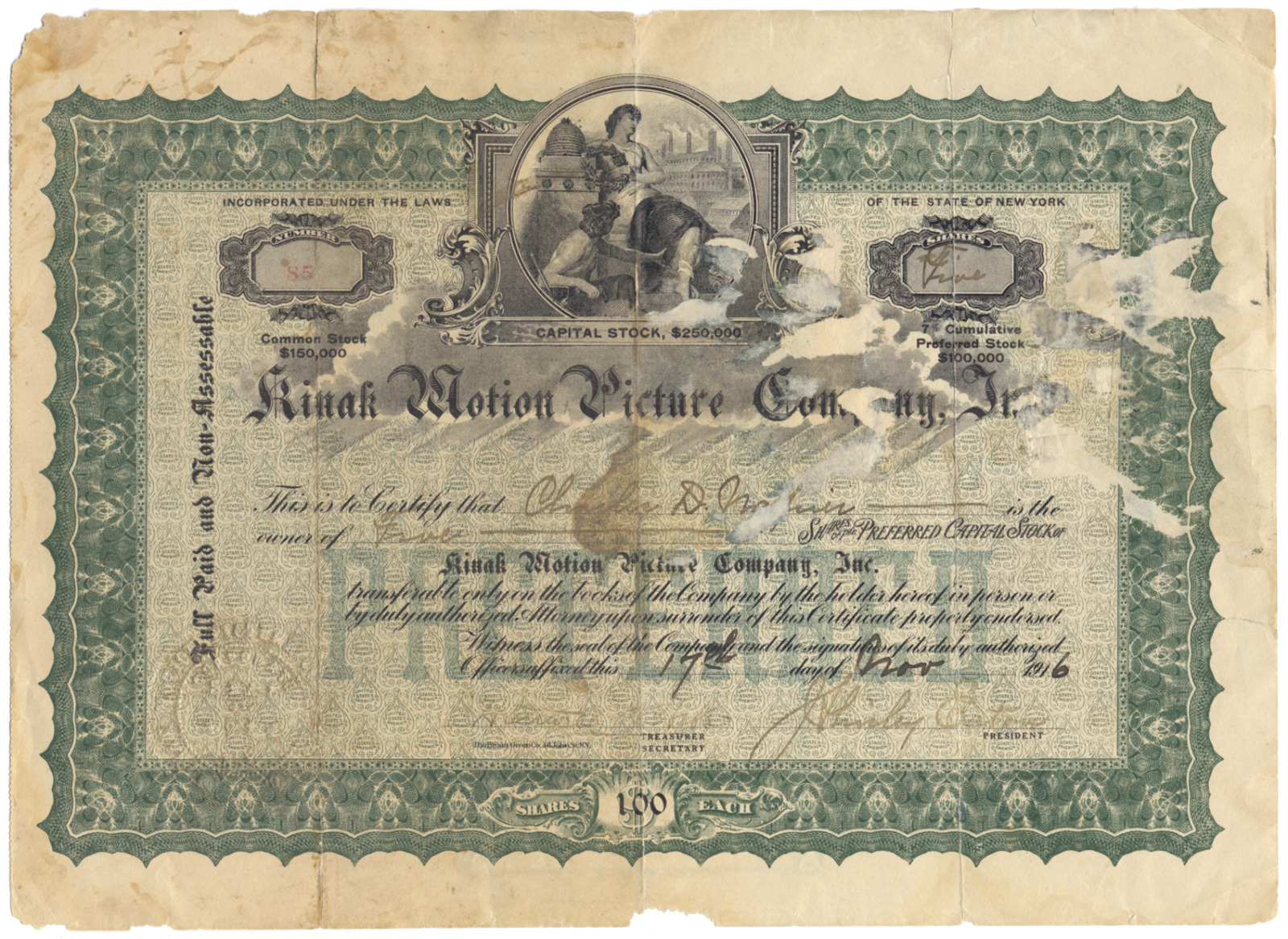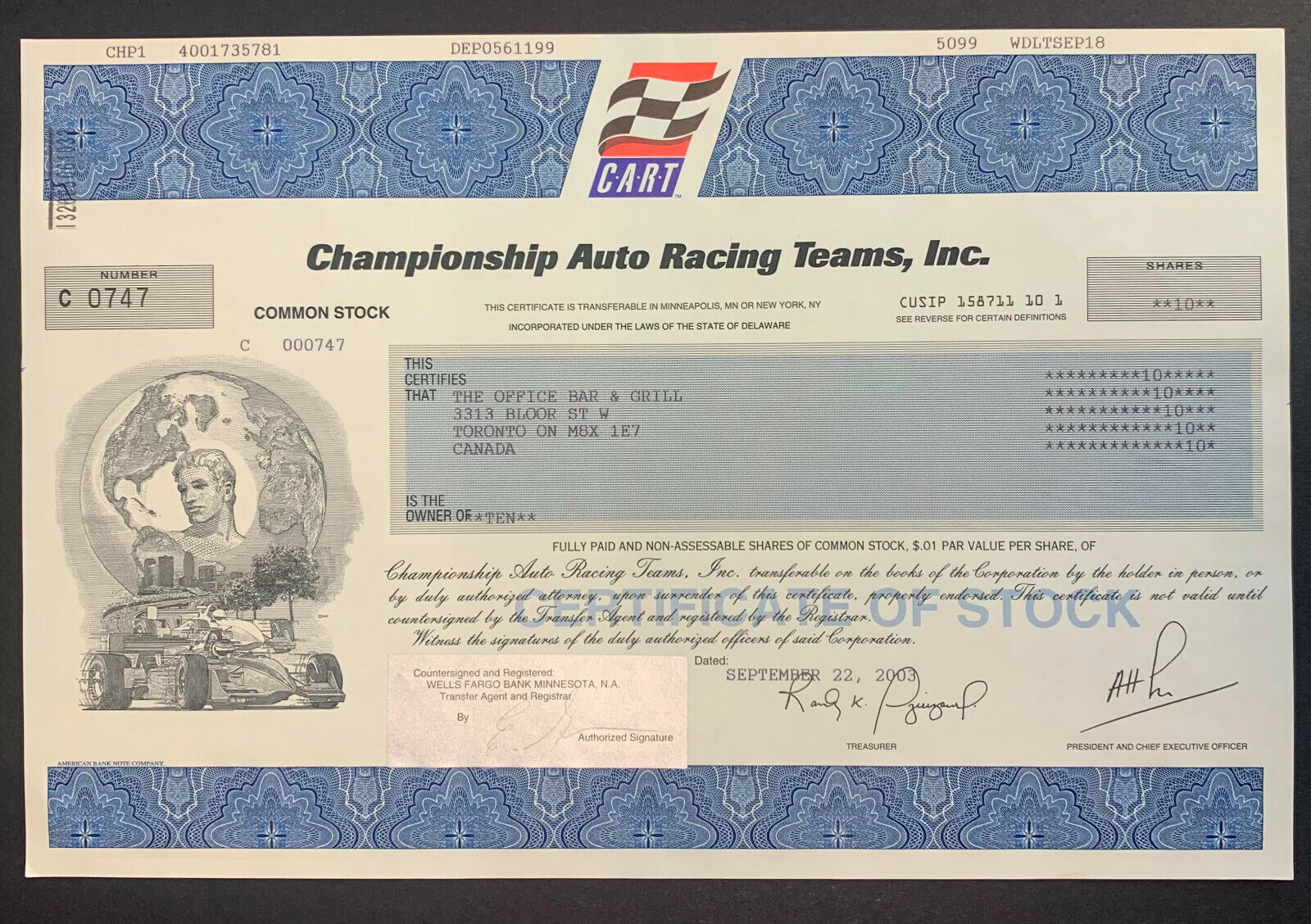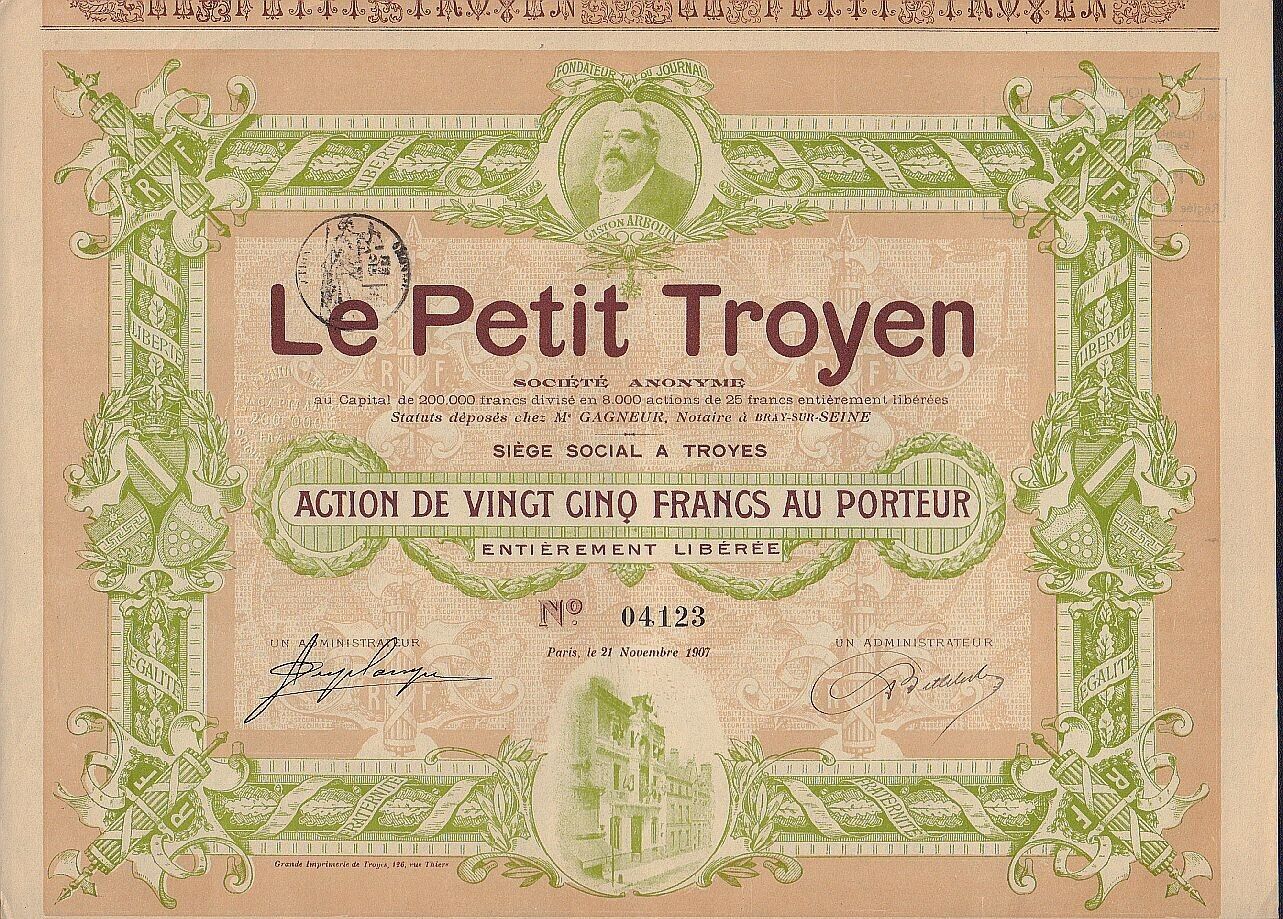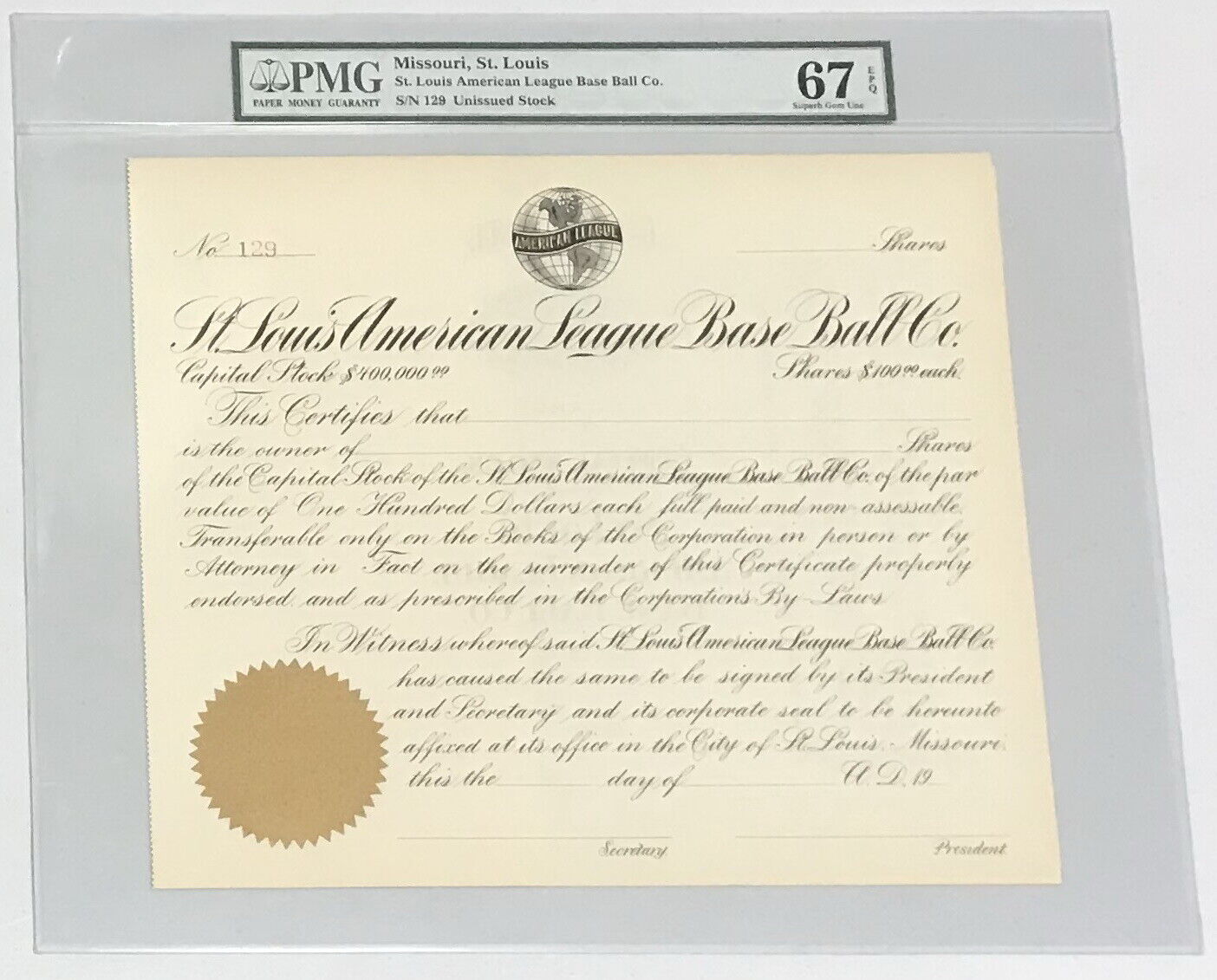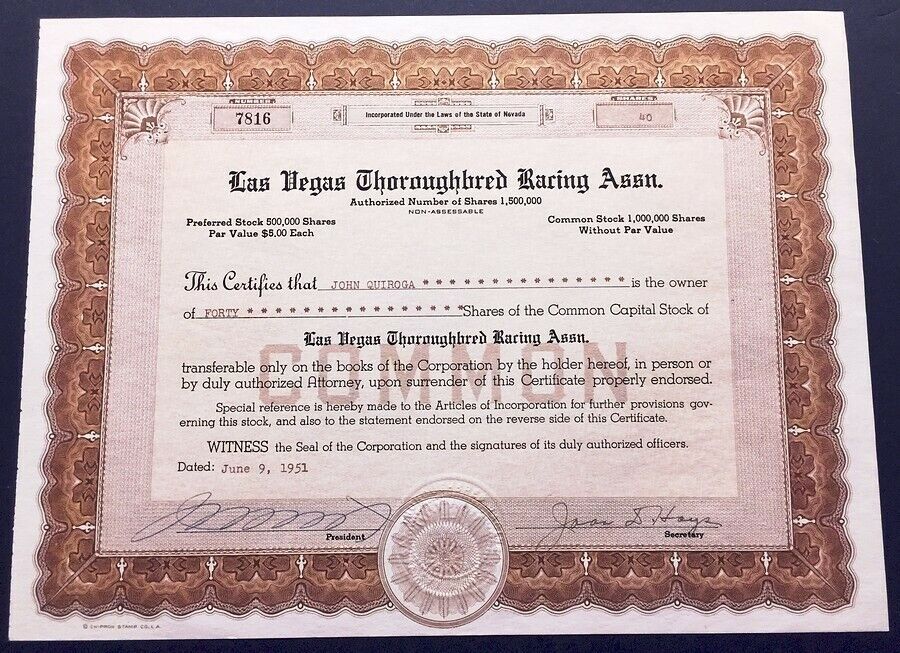-40%
Paramount Pictures Corporation Stock Certificate
$ 13.2
- Description
- Size Guide
Description
Product DetailsBeautifully engraved antique stock certificate from the Paramount Pictures Corporation dating back to the 1960's. This document, which carries the printed signatures of the company President and Secretary, was printed by the Security Bank Note Company, and measures approximately 12" (w) by 8" (h).
This certificate's vignette features a pair of reclining allegorical female figures flanking the Paramount logo.
Images
You will receive the exact certificate pictured.
Historical Context
Paramount Pictures can trace its beginnings to the creation in May 1912, of the Famous Players Film Company. Founder Adolph Zukor, who had been an early investor in nickelodeons, saw that movies appealed mainly to working-class immigrants. With partners Daniel Frohman and Charles Frohman he planned to offer feature-length films that would appeal to the middle class by featuring the leading theatrical players of the time. By mid-1913, Famous Players had completed five films, and Zukor was on his way to success.
That same year, another aspiring producer, Jesse L. Lasky, opened his "Lasky Feature Play Company" with money borrowed from his brother-in-law, Samuel Goldfish (later to be known as Samuel Goldwyn.) As their first employee, the Lasky company hired a stage director with no film experience, Cecil B. DeMille, who would find a suitable location-site in Hollywood, near Los Angeles for his first film, The Squaw Man.
Beginning in 1914, both Lasky and Famous Players released their films through a start-up company, Paramount Pictures. Organized early that year by a Utah theater-owner, W. W. Hodkinson, who had bought and merged several smaller firms, Paramount was the first successful nation-wide distributor. Until this time films were sold on a state-wide or regional basis; not only was this inefficient, but it had proved costly to film producers.
Soon the ambitious Zukor, un-used to taking a secondary role, began courting Hodkinson and Lasky. In 1916, Zukor maneuvered a three-way merger of his Famous Players, the Lasky company, and Paramount. The new company, "Famous Players-Lasky", grew quickly, with Lasky and his partners Goldfish and DeMille running the production side, Hodkinson in charge of distribution, and Zukor making great plans. With only the exhibitor-owned First National as a rival, Famous Players-Lasky and its 'Paramount Pictures' soon dominated the business.
Zukor believed in stars - after all, he had begun by offering "Famous Players in Famous Plays," as his first slogan put it. He signed and developed many of the leading early stars, among them Mary Pickford, Douglas Fairbanks, Gloria Swanson, Rudolph Valentino and Wallace Reid. With so many important players, Paramount was able to introduce "block-booking", which meant that an exhibitor who wanted a particular star's films had to buy a years'-worth of other Paramount productions. It was this system which gave Paramount a leading position in the 1920s and 1930s, but which led the government to pursue it on anti-trust grounds for more than twenty years.
The driving force behind Paramount's rise was Zukor. All through the 'teens and 'twenties, he built a mighty theatrical chain of nearly 2,000 screens, ran two production studios, and became an early investor in radio, taking a 50% interest in the new Columbia Broadcasting System in 1928. By acquiring the successful Balaban & Katz chain in 1926, he gained the services of both Barney Balaban, who became Paramount's president, and Sam Katz, who ran the Paramount-Publix theater chain. Zukor also hired independent producer B.P. Schulberg, an un-erring eye for new talent, to run the west-coast studio. In 1927, Famous Players-Lasky officially took on the name by which it was known, becoming Paramount Pictures Corporation.
Paramount Pictures was also an early backer of television, launching experimental stations in 1939 in Los Angeles (later to become KTLA) and Chicago's WBKB. It was also an early investor in the pioneer DuMont Laratories and through that, the DuMont Television Network, but because of anti-trust concerns after the 1948 ruling, proved to be a timid and obstructionist partner, refusing to aid DuMont as it sank in the mid-1950s.
In 1966, a sinking Paramount was sold to the Charles Bluhdorn's industrial conglomerate Gulf and Western Industries. Bluhdorn immediately put his stamp on the studio, installing a virtually unknown producer, Robert Evans, as head of production. Despite some rough times, Evans held the job for eight years, restoring Paramount's reputation for commercial success with The Odd Couple, Love Story, Rosemary's Baby and The Godfather.
Gulf and Western Industries also bought the neighboring Desilu television studio (once the lot of RKO Pictures) from Lucille Ball in 1967. Using Desilu's established shows like Star Trek, Mission: Impossible and Mannix as a foot in the door at the networks, Paramount Television eventually became known as a specialist in half-hour situation comedies.
By 1976, a new, televison-trained team was in place: Barry Diller, and his 'killer-Dillers,' associates Michael Eisner, Jeffrey Katzenberg and Don Simpson. The specialty now was simpler, 'high concept' pictures like Saturday Night Fever, and Grease. With his television background, Diller kept pitching an idea of his to the board: a fourth commercial network. But the board, and Bluhdorn, wouldn't bite. Neither would Bluhdorn's successor, Martin Davis. When Bluhdorn died unexpectedly, Davis dumped all of Gulf +Western's industrial, mining, and sugar-growing subsidiaries and refocused the company, renaming it Paramount Communications. Diller took his fourth-network idea with him when he moved to Twentieth Century-Fox in 1984, where the new proprietor, Rupert Murdoch, was a more interested listener.
Paramount's successful run of lightweight pictures extended into the 1980s and 1990s, generating hits like Flashdance, the Friday the 13th slasher series; Raiders of the Lost Ark and its sequels; Beverly Hills Cop and a string of films starring comedian Eddie Murphy; and the Star Trek features. While the emphasis was decidedly on the commercial, there were occasional quality efforts like Atlantic City and Forrest Gump. During this period responsibility for running the studio passed from Eisner and Katzenberg to Don Simpson to Stanley Jaffe and Sherry Lansing and, late in 2005, Brad Grey. More so than most, Paramount's slate of films included many remakes and television spinoffs; while sometimes commercially successful, there have been few compelling films of the kind that once made Paramount the industry leader.
With the influx of cash from the sale of G+W's industrial properties in the mid-1980s, Paramount bought a string of television stations and KECO Entertainment's theme park operations, renaming them Paramount Parks. In 1993, Sumner Redstone's entertainment conglomerate Viacom made a bid for Paramount; this quickly escalated into a bidding war with Barry Diller. But Viacom prevailed, ultimately paying billion for the Paramount holdings.
Paramount is the last major film studio located in Hollywood proper. When Paramount moved to its present home in 1927, it was in the heart of the film community. Since then, former next-door neighbor RKO closed up shop in 1957; Warner Brothers (whose old Sunset Boulevard studio was sold to Paramount in 1949 as a home for KTLA) moved to Burbank in 1930; Columbia joined Warners in Burbank in 1973 then moved again to Culver City in 1989; and the Pickford-Fairbanks-Goldwyn-United Artists lot, after a lively history, has been turned into a music-scoring facility for Warners.


